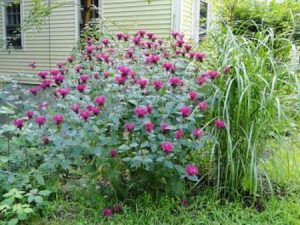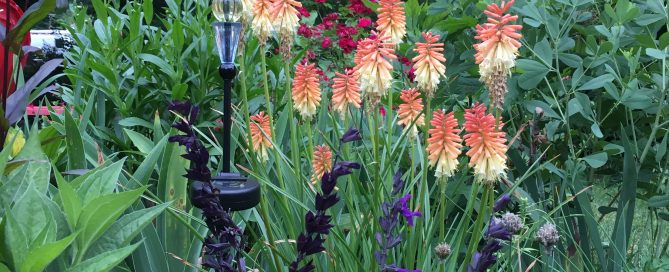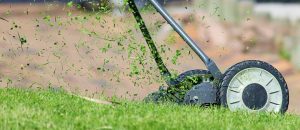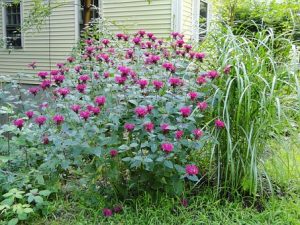Landscaping Trends: Reducing the Size of Your Lawn
A beautifully manicured green lawn takes a lot of watering and fertilizing, not to mention mowing. It’s truly not easy being green.
We spoke a while back with Sandra Vultaggio, Horticulture Consultant at Suffolk County’s Cornell Cooperative Extension. It turned out, that lawn reduction was something very much on her mind, too.
“I’ve been slowly edging out my own lawn in favor of native plants and flowers,” said Vultaggio. “A lawn is a high-input plant that requires a good deal of water and fertilizer to stay green, so it’s a good idea, say on Long Island, to reduce the amount of lawn we preserve.”
Vultaggio suggested, instead, planting more native perennials and shrubs.“Over time, after the planting stage, these will require much less irrigation. Perennials are pretty self-sufficient in searching for water on their own. Plus, their fertilizer requirements are at a minimum.”
Adding native plants is also a great help to local wildlife, who thrive when they can feed, find cover, and raise their young around familiar flora.
For those unsure on how Ito remove turfgrass, Dave Stockwell, owner of Deck and Patio, offers tips at the end of this blog:
Mid-Late Summer Blooming Plants
For those who are eager to save some money and time — all while helping local wildlife — Vultaggio suggested the following native plants:
1. Monarda (Bee Balm):
Native to North America, this beautiful flowering plant is from the mint family. It’s easy to grow, is deer resistant, and attracts pollinators like butterflies, hummingbirds, and bees.
It’s tubular flowers come in a variety of colors (pink, white, violet, red) and bloom in high summer through early fall. Bee Balm takes to full sun or light shade, and prefers a well-drained fertile soil. It needs some protection from excess moisture in winter.
2. Violet-colored Liatris Spicata (Gayfeather):
Gayfeather (tall purple plant on the left) is an extremely easy plant to grow.
It blooms in late summer and grows from corms that sprout in spring. Part of the sunflower family, it, too, is native to North America. It likes full sun, well-drained soils; it attract birds and butterflies, and is an ideal perennial.
Because the Gayfeather often grows to a robust 2-4’ feet tall, it may require staking or some other support.
3. Nectar and pollen-rich Asclepias tuberosa (Milkweed):
Milkweed is native to eastern North America and blooms in clusters of orange flowers from mid-late summer. It is drought-tolerant and attracts birds and pollinators. It is a particularly good source of nectar for Monarchs; plus Monarch caterpillars feed off its leaves.
This plant thrives in poor dry soils, likes full sun; it is deer resistant, and is nicely fragrant. These above two photos are of Vultaggio’s own garden and are courtesy of Sandra Vultaggio.
4. Kniphofia (Red Hot Poker):
This frequently bi-colored flower makes a dramatic statement in the garden and is an ideal plant for those who are new to gardening. In fact, this plant is so easy to grow it has been described as “tough to kill.” It is fairly drought-resistant, plus hummingbirds and butterflies love it. It is best planted in early spring or late fall.
When in bloom, the blossoms appear a bit like a hot poker or torch and for those feeling a bit of sadness saying good-bye to some of their lawn, note that these plants boast very “grass-like” leaves. This photo is of Vultaggio’s own garden and is courtesy of Sandra Vultaggio.
(Note: the dramatic dark blue/black flowers in the foreground are Salvia ‘Black and Blue’ which bloom from late spring to early autumn.)
How to remove turfgrass.
— Decide where you want to reduce the lawn area
— Use powdered lime, flour, or spray paint to mark the exact section you wish to cut back;
— Water the area ahead of time and then ‘scalp’ the grass (cut it to expose the stems)
— Now you have two options:
1) The physically harder, but quicker, one is: Using a turf cutter or spade, dig out the turf. Add soil and plant right away. (Note: keep the removed turfgrass. After the sod breaks down, the turf can help make nitrogen-rich soil around the roots of plants).Or…
2) Try an easier, but slower, alternative method: Cover the sod with about 7 layers of newspaper or thin cardboard. Add a minimum of 6 inches of compost or topsoil on top. The grass underneath will decompose in due course. Planting can then be done without any cultivation of the soil.
— Dave Stockwell
























